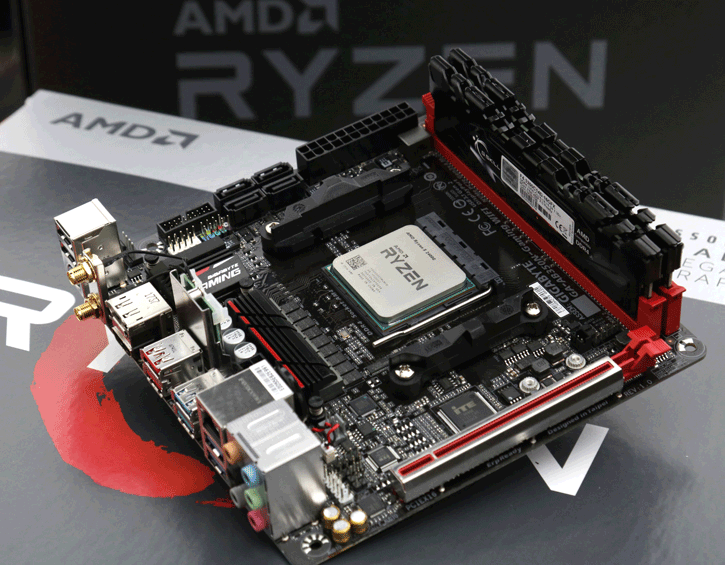The Lesser Bit - The Ultra-Budget Build
The 'Budget' Build
Depending on how much you want to spend, you either will or won't see a dedicated graphics card. It is the most expensive part of the build, especially at the entry level, and it marks the difference between an ultra-budget but 'functional' gaming PC, and one that can have a decent chance at taking on modern titles at 1080p. Note, here, that your gaming performance won't actually be that far off something you could expect off Sony's now fairly venerable PS4. However, we still feel justified in spending money on a PC that matches it for several reasons:
- It is still a PC: At the end of the day, this PC is still... well, a PC, and therefore it has a layer of functionality and use that you do not have with the consoles from Sony/Microsoft. Furthermore, hardware akin to what I will recommend will ensure that it is also a very good PC. Decent for gaming, and equally decent for anything else.
- The option of 60 FPS: The main letdown of this console generation was the choice of CPU, an older Jaguar based Octa-Core setup from AMD. In scenarios where you can let the frame rate 'free,' more CPU horsepower will freely allow it.
- An upgrade path: Like or not, components age. However, with the consoles, your options are fairly limited. Either buy into the generational and incremental upgrades brought on by the PS4 Pro or Xbox One X, or upgrade your PC bit by bit. At Guru3D, we ensure that these PC's have decent upgrade paths. Want an upgrade for this one? Add a GPU, job done.
Naturally, sometimes a PS4 will quite happily play these games at higher visual quality than this PC. That is the magic of console optimization, for sure. A popular tactic is usually to use a programme like RivaTuner to artificially lock the game's frame rate to something like 30 or 45 fps, in order to provide a more consistent experience. If the title in question has a decent implementation of motion blur, and you are happy to play with a controller, it's a pretty comparable experience, and you have a PC out of it. With that out of the way, let's get to the parts.
CPU - AMD Ryzen R3 2200G
This little chip took the market by storm when it first dropped at the end of 2017. It is, essentially, a slightly tweaked Ryzen 3 1200 with an onboard GPU. 4 cores, 4 threads, overclockable, and sporting Vega 8 graphics. 8 compute units at 1100Mhz. It's very basic, but... actually fairly potent. Sure, some modern titles just won't run that well on a quad-core CPU, but even in the version of this build with a dedicated GPU, your lower end graphics card will still be the bottleneck in most cases. I say 'most' because there are some very, very CPU heavy titles out there. Anyhoo. All in all, this a solid CPU choice for the end of 2018, albeit one that might well soon see the end of its days. However, a quick look on PCPartPicker sees the much loved Ryzen 5 1600 or 2600 at just 129 or 149 USD respectively. If you decide you like PC gaming, but are realizing your CPU needs some more cores/threads... you catch my drift?
It's also a well-known fact that this little APU responds extremely well to some overclocking, which you will certainly want to do. That, therefore, leads us onto our next two items.
Motherboard - Asus PRIME B450M-A/CSM
Pretty simple really. A board in the mid 70 USD range gets you 4 RAM slots, support for overclocking, and a really rather solid I/O. It won't set any records, but it's really all you need for the 2200G. You could spend less for a B350 board, but we're talking perhaps 10 USD difference for a B350 model that is still 'decent.' In my view, there is no point, even at this level, of entirely cheaping out.
CPU Cooler - Cooler Master Hyper 212 Evo or Deepcool Gammax 400
Pretty much the darling of all system builders for many years, there are certainly better coolers out there, but few (if any) can match the 212 Evo's price vs. performance. There are others, sure, and Deepcool's excellent Gammax 400 can be a better choice, as it regularly gets featured (at least here in the UK) for below £20. It will certainly give you the headroom you need to overclock both the CPU and GPU on the 2200G to extract some very notable extra performance. Just be careful of pumping too much voltage through the board, ok?
For the record, I should say now that in no way is overclocking essential, and not doing so is a decision many make, and that is fine. We are merely giving you the option to be able to do so... plus, it's kinda' fun. I should also state that if you ARE going for a dedicated GPU, then - oddly - an aftermarket cooler isn't necessary, as the included Wraith Stealth cooler that comes with the R3 2200G or R3 1200 is plenty adequate for a small 300-400Mhz boost to all four CPU cores, if you're not touching the Vega GPU.
RAM - Patriot Viper 4, 8GB (2x 4GB) @ 3000MHz.
The speed of your system memory is very important for the performance of APUs. Therefore, fast RAM is necessary. This kit from Patriot comes in at below 60 USD, and will do exactly what you need. When you need 16GB by default (and that day will come), the board above features two extra slots. Simple. Getting the memory to run at its advertised 3000Mhz speed should really be as easy as making sure your BIOS is up to date and then enabling the XMP profile to set the DIMMs to 3000Mhz, and the timings/voltages to what is required.
Storage - Crucial BX500 240GB SSD
You needed an SSD in 2018, you need it in 2019. The above Crucial manufactured drive uses a very standard memory/controller combo that will result in solid performance for most people, and that is good enough for us. I refuse in any scenario to drop below the 240GB barrier now, as well. Buy a 120GB drive and tell me how much space you have for anything. I'll wait.
Power Supply - Corsair CX550M
I know. 550W is entirely unnecessary for this PC. However, I again refuse utterly to use PSUs that aren't at least 80+ Bronze rated, and semi-modular. The 450W version of this unit wasn't to be found, at least on US PCPartPicker, and 550W gives you solid headroom for even a mid-high end GPU upgrade down the line, like AMD's/Nvidia's mid-range 580/590 or 1060, or Nvidia's 1070, 1070Ti, or RTX 2070. If you want to go for a cheaper and non-modular PSU, fine, but I don't recommend doing so.
GPU... a tricky one, read on
I will preface this with a major caveat. The GPU of choice will absolutely depend on where in the world you are located. This is inevitable, so below I will go through some locations and what the best deals were on PCPartPicker. Naturally, these were found at the time of writing, so please bear in mind that come the time when you read the guide, things might have changed. Also, please note that I am trying to get the absolute maximum in terms of price vs. performance, here. If your budget simply cannot stretch to GPUs in the price ranges you see below, consider stepping down to a card like Nvidia's GTX 1050, or AMD's RX 560 (1024SP). Please note that these prices are accurate at the time of writing.
- United States - AMD Radeon RX 570 4GB, Sapphire Nitro+ (149.99)
- United Kingdom - AMD Radeon RX 570 4GB, Sapphire Pulse (140.00)
- Germany - AMD Radeon RX 570 4GB, Sapphire Pulse (155.68)
- France - AMD Radeon RX 570 4GB, Gigabyte Aorus 4G (176.61)
- Canada - AMD Radeon RX 570 4GB, Asus ROG Strix (169.99)
Those living in the UK and US are certainly on the better end of the pricing scale overall, with each part being that much cheaper, enough to make the total build (with a GPU) come in either just below or just above the 500 USD/GBP mark. For those on the EU mainland and Canada, you are looking at 550 or so, give or take. This might well break your budget, so it's either APU only or save a bit more!
Ultimately, though, the above follows our rough framework for an entry-level gaming build. The RX 570 is now such good value that we cannot recommend the GTX 1050Ti at all, because - in most cases - they come in at similar price points, or price points that are within a very short distance of the other. For, say, an extra 20 EUR/GBP/USD, I know which card I would rather have. Next, we move onto our mid-range build, that will be able to handle 1080p gaming entirely 'maxed out,' or lighter 1440p gaming. Yes, honestly. If the title is well optimised enough and not too heavy, a 570 can do 1440p.


